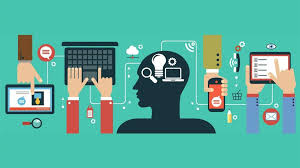JAKARTA, adminca.sch.id – In today’s fast-paced digital world, the ability to discern fact from fiction has never been more crucial. As someone who has witnessed the evolution of news consumption over the years, I can’t stress enough the importance of information literacy in our educational system. With the rise of misinformation and fake news, teaching students to evaluate news for truth is an essential skill that will serve them well throughout their lives. Let’s explore what information literacy entails, why it matters, and how we can effectively teach these skills to our students.
Understanding Information Literacy

At its core, information literacy refers to the ability to recognize when information is needed and to locate, evaluate, and use that information effectively. It encompasses a range of skills, from critical thinking to research proficiency. I remember my own school days, where we were taught to seek out reliable sources for our assignments. Those lessons laid the groundwork for understanding how to navigate the vast sea of information available today.
In the context of news, information literacy involves teaching students to assess the credibility of sources, analyze the intent behind a piece of information, and recognize biases—both in the media and within themselves. This skill set is vital not just for academic success but for informed citizenship in a democratic society.
The Importance of Evaluating News
As we all know, the news landscape has changed dramatically. With social media and online platforms dominating the way we consume information, students are often bombarded with a mix of credible journalism and sensationalist content. I recall a conversation I had with a high school teacher who expressed concern over her students’ ability to differentiate between reliable news and misleading headlines. It’s a valid concern, and one that highlights the need for robust information literacy education.
Teaching students to evaluate news helps them develop critical thinking skills. By questioning the validity of information and seeking out multiple perspectives, students learn to form their own opinions based on evidence rather than emotion or hearsay. This skill is not only beneficial for academic purposes but also empowers students to engage thoughtfully in discussions about current events and societal issues.
Strategies for Teaching Information Literacy
So, how can educators effectively teach information literacy? Here are some practical strategies that I’ve found to be effective:
Introduce the CRAAP Test
One of the most straightforward methods for evaluating sources is the CRAAP test, which stands for Currency, Relevance, Authority, Accuracy, and Purpose. By guiding students through these criteria, they can systematically assess the credibility of news articles and reports. I’ve seen students become more discerning consumers of information when they apply this framework.
Encourage Source Diversity
Encourage students to seek out information from a variety of sources, including traditional media, independent journalism, and academic publications. This not only broadens their understanding of an issue but also highlights the importance of considering multiple viewpoints. I often remind students that no single source has a monopoly on truth.
Analyze Bias and Perspective
Teach students to recognize bias in news reporting. Discuss how language, tone, and framing can influence the reader’s perception. I remember a classroom activity where we compared two articles on the same event from different outlets. It sparked a lively discussion about how the portrayal of facts can shape our understanding of the truth.
Incorporate Real-World Examples
Use current events as teaching tools. Analyze recent news stories together, discussing their origins and the reactions they provoke. I’ve found that when students engage with real-world examples, they become more invested in understanding the nuances of information literacy.
Promote Digital Literacy
In addition to evaluating news, students should be taught about digital literacy skills, such as recognizing phishing attempts, understanding algorithms, and knowing how to verify information online. I once attended a workshop on digital literacy that opened my eyes to the importance of these skills in today’s tech-driven world.
Foster Discussion and Debate
Create a classroom environment where students feel comfortable discussing and debating various viewpoints. This not only enhances their critical thinking skills but also teaches them to articulate their thoughts and listen to others. I’ve seen students grow in confidence when they engage in respectful discourse about contentious issues.
Conclusion: The Path Forward
As we navigate an increasingly complex information landscape, the role of educators in fostering information literacy cannot be overstated. Teaching students to evaluate news for truth is not just about imparting knowledge; it’s about equipping them with the skills they need to thrive in a democratic society.
By incorporating strategies that promote critical thinking, source evaluation, and open dialogue, we can empower the next generation to become informed citizens who can navigate the challenges of the digital age. Let’s commit to making information literacy a priority in our classrooms, ensuring that students are not just consumers of information, but discerning evaluators of truth. After all, a well-informed society is the foundation of a healthy democracy.
Read also about Construction Theory to understand the foundational principles, design methodologies, and structural concepts that guide modern building practices and innovation.



